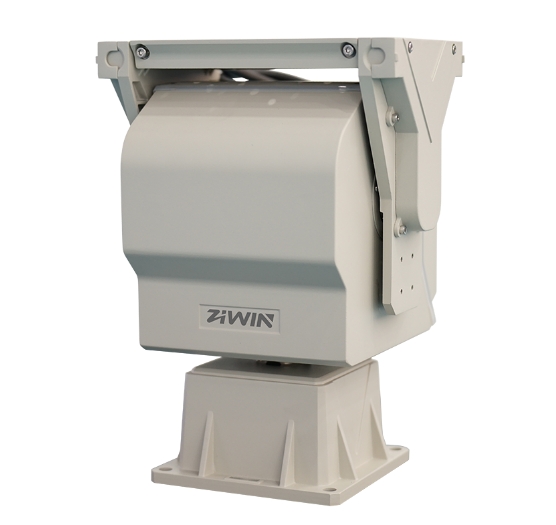
In today’s security surveillance systems, the Pan Tilt Unit (PTU) plays a crucial role in ensuring comprehensive coverage and precise positioning. By moving up, down, left, and right, a PTU can significantly expand the camera's field of view. However, to maximize its efficiency, it’s not only about proper selection and configuration but also effective management and maintenance. This article explores several strategies for improving the Pan Tilt Unit efficiency, helping you optimize the performance of your surveillance system.
First and foremost, the foundation of improving PTU efficiency is selecting high-quality equipment. The performance of the PTU directly affects the overall performance of the surveillance system. When choosing a device, consider the following factors:
· Accuracy and Stability: The accuracy of the PTU is vital, especially in locations that require high-precision surveillance, such as traffic monitoring, public safety, and so on. Choosing a PTU with high resolution and low error margins ensures stable and precise positioning in real-time monitoring.
· Durability: PTUs are often used outdoors or in harsh environments, so selecting devices with good waterproof, dustproof, and high-temperature resistance features is essential. This guarantees the device can operate efficiently in extreme weather conditions.
In addition to selecting the right PTU equipment, proper configuration and installation are key to improving its efficiency. Whether for indoor or outdoor use, the installation position and angle of the PTU directly impact the monitoring effectiveness.
· Optimize Installation Location: Ensure the PTU covers the widest possible area for surveillance. Avoid obstructions like buildings or other objects that may create monitoring blind spots. By performing precise calculations and installations, the PTU’s field of view will be maximized.
· Efficient Wiring and Power Management: Ensure the wiring for power and signals is simple and organized to avoid signal delays or instability caused by long or poorly connected cables.
In recent years, with technological advancements, more and more Pan Tilt Unit devices are supporting intelligent control systems. By integrating advanced control systems, you can automate PTU management, significantly improving efficiency.
· Auto-Tracking Function: Modern PTU devices are typically equipped with auto-tracking capabilities, which can automatically identify and follow moving targets. This feature offers significant advantages in security monitoring, traffic surveillance, and other fields, reducing manual intervention and improving response time.
· Integration with Sensors: By integrating with sensors (such as motion sensors, infrared sensors, etc.), PTUs can automatically adjust their position when detecting a target, ensuring real-time tracking and reducing false alarms or missed detections.
To ensure PTUs operate efficiently over the long term, regular maintenance and servicing are critical. As precision equipment, PTUs may experience mechanical failures or loss of positioning accuracy if not checked and maintained regularly.
· Routine Inspection of Moving Parts: PTU’s moving components, such as motors, drive systems, and transmission mechanisms, should be periodically inspected and lubricated to prevent wear and tear from affecting accuracy.
· Cleaning Lenses and Sensors: If the lenses and sensors of the monitoring system accumulate dust or get contaminated, the quality of the images and data will be compromised, impacting overall system efficiency. Therefore, regular cleaning of lenses and sensors is necessary to maintain clear monitoring.
With the rise of cloud computing and big data analytics, the management and data analysis of Pan Tilt Units are also entering the intelligent era. By integrating PTU devices with cloud platforms, you can view device status, surveillance footage, and data analysis reports in real-time, optimizing the overall performance of the surveillance system.
· Remote Monitoring and Management: Using cloud platforms, administrators can control PTU devices remotely, adjusting surveillance direction and coverage in real time. This flexibility allows the monitoring system to quickly respond to emergency events.
· Data Analysis and Alert Systems: Through data analytics, cloud platforms can provide operational statistics for the devices, offering early warnings of potential malfunctions or efficiency declines, which helps with maintenance scheduling.
Finally, improving the efficiency of the Pan Tilt Unit requires ensuring compatibility with other security devices. In modern surveillance systems, PTUs need to work closely with cameras, sensors, alarm systems, and other equipment. Ensuring that PTUs integrate seamlessly with these devices can greatly enhance the overall system efficiency.
· Compatibility with Video Surveillance Systems: Ensure the PTU interfaces are compatible with video surveillance systems to avoid signal loss or delays caused by interface mismatches.
· Integration with Alarm Systems: By integrating PTUs with alarm systems, they can automatically adjust their direction in the event of an alarm, providing security personnel with accurate perspectives.
In summary, improving the Pan Tilt Unit (PTU) efficiency in surveillance systems requires more than just selecting the right equipment. It involves proper installation, intelligent control systems, regular maintenance, and seamless integration with other devices. By implementing these strategies, you can ensure your PTU operates efficiently in various environments and applications, enhancing the effectiveness and security of your overall monitoring system.
If you are considering upgrading or optimizing your surveillance system, choosing a high-efficiency Pan Tilt Unit and combining it with intelligent management solutions is a smart choice to enhance system performance. Contact us today, and we will provide you with a tailored PTU solution to help your security surveillance system advance into an intelligent and efficient future.